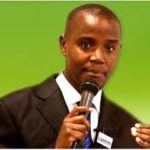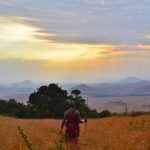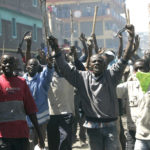By David Kuria
Founding Director, Gay and Lesbian Coalition Kenya (GALCK)
August 2012
Here is update on the LGBT situation in Kenya for our LGBT community in recent years. I have focused on the broader picture of the movement and the social scene. Having been involved as the first director, of Galck, it is likely that I have presented a much more rosy picture than may be the actual case, though I tried to be as objective as possible.
Introduction
The Gay and Lesbian Coalition (GALCK) in their website (www.galck.org) say LGBT spaces and groups
have expanded exponentially since 2008. GALCK is an umbrella organization bringing together a membership of six organizations including, ISHTAR MSM, Gay Kenya, Minority Women in Action, Transgender Education and Advocacy, Afra Kenya and PEMA Kenya. The latter is based in Mombasa – the Kenyan coastal town. Thus of the original nine members only three remain to-date.
Yet, GALCK has existing memoranda with Tamba Pwani, a Malindi based group, LESBOS a Nairobi University LGBT student group and Q-initiative whose membership largely draws from alumni of Moi University in Eldoret.
Other organizations working with GALCK include, Upper Rift Minorities an LGBT group catering for the
needs of pastoralist communities in Kenya, and MPEG a group based in Thika. Kisumu a Western Kenyan town also brings on board a number of groups under a regional umbrella body known as NYAWEK.
GALCK also works closely with USA-based “The Other Sheep Kenya” and NEEMA MCC Church, which cater for the spiritual needs of the Kenyan LGBT community as well as challenging the religious fraternity into being more accepting and loving.
The Advocacy Spaces
Galck started her formal existence with the official opening of the GALCK offices and drop-in centre in
August of 2008. This official opening was attended by many dignitaries who included diplomats, leading
Human rights activists and even the current Chief Justice Dr. Willy Mutunga. Dr. Willy Mutunga was at
the time working with Ford Foundation East African Office. With funding from Norwegian Development
organization – NORAD, GALCK was able for the first time in Kenyans LGBT advocacy history to have an
office operating full time and with paid staff. While funding came through in March of 2008, the office
did not open until after August 2008. Initially this was because of the effects of post-election violence,
but also because there were few landlords willing to rent out their premises to a gay organization.
During the search for the office, the Gay and Lesbian Coalition of Kenya leadership had decided that
they would not hide the real identity of the group, or the fact that they would be working towards legal
reform and social acceptance. As luck would have the post-election violence had bitterly affected the
property market and those in the industrial area of Nairobi were most affected, which is how the offices
came to be located in its current place.
No sooner had the office opened than the LGBT community began making demands on the organization
beyond legal reform, which is what envisaged originally. Indeed the staff of 4 almost felt overwhelmed
by the community expectations. The staff had expected to immediately begin working on legal reform;
yet the issues they found themselves addressing most of the time had to do with blackmail, extortion,
false imprisonment often by off-duty policemen hoping to attract a quick bribe.
Other cases had to do with LGBT person who had been denied health services because the care
providers learned of their sexual orientation. In one such many cases, a group of lesbians had gone to a routine cervical examination – pap smear, and when the clinician learnt that they were lesbians she
not only refused to provide the service to the remain group, but also decided to call other nurses in the
clinic to see ‘lesbians!’ Cases of clinicians calling others to witness the ‘scene’ of real gays or lesbians
continue to be reported to this day from all parts of the country.
It also happened that at the time National Aids Control Council – NACC, was reviewing its National AIDS Strategic plan. Although the earlier plan was expected to expire in 2010, research had provided evidence that MSM activity was an important HIV transmission mode in Kenya contributing to about 15.2% of the overall national incidence. Other important drivers were casual heterosexual sex – 20.3%, and heterosexuals in marital or regular relationships – 44.1%. Formerly the focus of the plan had been on sex and migrant workers.
The review provided then an opportunity for GALCK and activists to become more involved in the
process. There had been limited and often isolated attempts to reach out to gay men in Kenya in
provision of HIV services. In one of the first meetings the activists were called “attention seekers” and
largely ignored. With time however, they became the most consistent group in the strategic planning
meetings and even helped in some instances to provide continuity and memory of sector planning
committees.
This process was to culminate in GALCK’s name being listed as one of the partner organizations to
help and support the government in the implementation of the strategic plan. Other groups such as
ISHTAR MSM, – a founder member of the coalition are now involved in the NACC and CCM processes at
National level. Other LGBT groups are likewise, now, involved at regional levels with HIV/AIDS services at their levels.
Universal Periodic Review – UPR, Mechanism
In 2010, Kenya was also going through the United Nations Human Rights peer review mechanism,
known as Universal Period Review – UPR process. This process happened to be spearheaded by an
Equality and Non-discrimination Human Rights Giant, known as Lawrence Mute. Mr. Lawrence Mute
works as a Commissioner with the Government National Commission on Human Rights – KNCHR.
Commissioner Mute invited GALCK and member organizations to form the sexual and gender minorities cluster within the broader National process.
This invitation was particularly helpful in mainstreaming GALCK within the broader National Human
Rights fraternity. This was also a very engaging process that took place over a period of a number of
months and almost up to four meetings a month. LGBT participants never took this invitation lightly and were present in all the meetings.
The outcome of this participation was the Government of Kenya being questioned during the UPR
process on its stand on sexual minorities. For the first time we had an official response from the
government on its position on LGBT Kenyans. Though the government said it does not discriminate
against against sexual and gender minorities, it also said it would not move to remove laws that
criminalize same-sex sexual conduct because it is against African culture.
While the government response was not ground-breaking or indeed any different from other African
countries, including some of the most homophobic such as Uganda, it did provide a basis from which we
could begin engaging with it.
Since the government said, that it does not discriminate against LGBT persons, activists and allies
have now been producing reports to demonstrate how the laws and policies perpetrate a regime
of discrimination and exclusion. One such report, produced by a supportive mainstream Human
Rights organization – is the.”Outlawed amongst us” It is available on this link: http://www.khrc.or.ke/
component/docman/doc_details/14-the-outlawed-amongst-us.html
Activists hope that by documenting cases of active discrimination, they will have a mounting body of
evidence on the continued discrimination and exclusion they experience. They also hope to use this
while pursuing legal option in the decriminalization process.
Supportive Mainstream Organizations
During the early days of activism, the only mainstream organization that was working with GALCK was
Liverpool VCT – LVCT. The LVCT had been the first HIV/AIDS service organization in Kenya to work
with the MSM. Since it was based in Nairobi, it was a natural ally of the nascent LGBT movement. They
however made it clear that their interest with the LGBT movement was only in the public health area.
This position constantly put them at odds with the LGBT leadership, which wondered how one could
successfully divorce the public health imperative from the human rights, even when the latter was
largely responsible for the vulnerability that the MSM faced.
The recent global report on law and HIV, validates this position, just like an earlier report by Gay
Kenya. The difficulties that the current GALCK leadership faced with LVCT, underscored the need to
broaden support from other mainstream organizations. Indeed during the UPR process, many Human
Rights organizations not only got to know of GALCK, but a few of them took keen interest in pursuing
partnerships.
One such organization was the Kenya Human Rights Commission – KHRC, which was among the first
mainstream human rights an organization to reach out to GALCK. They were particularly keen in
providing capacity support to the movement. At first they created an internship position, where GALCK
members could go and work for a period of six months within KHRC offices.
The objective was both to provide capacity building support to our members but also create ease of
reach to the various human rights support structures with KHRC – e.g., during the numerous cases
of arrests, KHRC staff could accompany our members to the police stations. This helped a great deal
because the commission is a nationally respected organization. This internship position has since been
upgraded to a full Equality and Non-discrimination program officer position.
Other mainstream organizations that have since come on board include, the International Commission
of Jurists – Kenya Chapter, AIDS Law project and the Release Political Prisoners – RPP. The latter is
actually very interesting because there have been no formal arrangements seeking their support.
Indeed the only way that people knew of their LGBT rights supportive agenda is when the Kenyan
National Commission on Human Rights – KNHRC issued a report calling for decriminalization of
homosexuality in Kenya. The Report is available on this link: http://www.knchr.org/Portals/0/Reports/
Reproductive%20health%20report.pdf
This report was ground breaking on several levels. Firstly because it was made by a government body
charged with advisory and oversight responsibility to the government on Human Rights. Secondly
because it was the first time ever a systematically developed National Report had openly called for
decriminalization. As expected the religious organizations moved to condemn the report. Unfortunately
there were few supportive voices for the National Commission – one of this few voices came from
Release Political Prisoners – RPP, which had never commented on LGBT rights before.
It does therefore seem like there is a groundswell for mainstream organizations to enlarge their view of
basic human rights as encompassing also the LGBT persons in Kenya.
Social Spaces
The social spaces may have expanded in terms of the number of people they accommodate but
have not increased in any dramatic way. This is rather surprising because one would expect an
entrepreneurial spirit to precede legal change – sort of the de facto preceding the de jure. There have
been a number of exclusive gay bars but have largely not been financially successful hence have had to
close. There are however quite a number of “gay friendly spaces” in Nairobi and other towns around the
country.
The most widely known of these is the Tacos Bar and Restaurant which is in the middle of town. While
this is possibly the only place where gay and lesbian people are not afraid to self-identify, it has also had
some of its lowest times. Indeed the best way to describe the relationship the community have with
Tacos is love-hate, which is characterised by moments when people can even kiss in public, but also
times when the ownership gives directives for gays to be kicked out.
Other public spaces include Gypsies Club in Westlands which is exclusivist and mainly caters for
expatriate and upper income gay Kenyans.
On the whole the community members generally follow an “occupy and colonize” mentality. This
normally happens to new joints in town or the suburbs, until they are discovered and kicked out. This
also means that the “gay scene” is highly mobile. What may be the favourite place this year will not
necessarily be the same next year. If one would therefore like to know where the scene is, the best way
is to find out from the community members often through GALCK or the other members such as Gay
Kenya, ISHTAR – all of which have websites: www.ishtarmsm.org, www.galck.org, www.neemamcc.org,
www.identitykenya.com and www.gaykenya.com.
Of course there are community drop-in centres in many of the towns in Kenya. GALCK has a community
space and as does other other organizations in Kisumu, Mombasa and other towns. Other spaces have
been provided by a number of house parties that continue to be organized almost on weekly basis.
For tourists and other visitors in Kenya, it is important to note that blackmail and extortion are still
prevalent. Often however they are directed to isolated members of the community mostly married men
who do not wish to associate themselves with the LGBT groups or communities. Visitors to Kenya are
also very easy victims since they do not actually know that the law as it is requires one to be “found
in the act.” It is also important to add, that the blackmailers often work with off-duty policemen (or
women though there are no reported cases of policewomen being involved).
In terms of precaution – if you are caught up in one such situation, do get into contact with GALCK or any of the other registered groups. If your contact does not want you to contact any of the groups, then
that should be one big red sign. If you were ever to be arrested, insist on being taken to the police station.
The New Constitution says no one should be held be more than 24 hours before being presented in
court and the court will surely grant you bail. It is highly unlikely that they will go through with this
process, but if they did, then you would be helping GALCK and activists in Kenya build a legal precedence for advocacy.
Religious Spaces
Much of homophobia in Kenya like other parts of the countries in the continent has its root from the
religious sector. Working with the religious leadership and rank and file is therefore very important to
create safe spaces for the LGBT people. Activists from across the country have been reaching out to
the religious leaders with varying degrees of success. Not only have they held a number of religious
retreats providing for the spiritual needs of the community. There have also been attempts to reach to
the highest members of the church leadership in Kenya.
PEMA Kenya has quite a number of programs focusing on the Muslim religious leadership, while in
Nairobi, Other Sheep Kenya and MCC Neema church work with the Christian leaders. There have been
attempts to reach out particular to the Anglican Church. Close to 5 Anglican bishops have met with Rev.
Kimindu, himself a retired Anglican priest and army chaplain and in some cases supported the LGBT
rights struggle although from the closet.
Recently when an Anglican bishop for Mombasa diocese said that gays are worse than terrorists,
Rev Kimindu took him up on the comments. The bishop confessed he had never met a gay person in
Kenya. So the Rev. Kimindu organized for a meeting in which up to 30 gay people were present. See http://identitykenya.com/index.php/religion/498-kenya-anglican-bishop-meets-gays-refutes-homophobic-remarks
Legal Reform
The legal process has largely been characterised by GALCK and member groups organizing legal clinics
for the LGBT persons to understand their rights within the current framework of the law. There has
been however attempts to reform the law, through a structured process dubbed “Multi-tier Approach
– MTA.” This hopes to bring on board many stakeholders in this process, including the religious, legal
practitioners and the community towards a broad based legal reform process. Details of the MTA and how one can join in can be obtained from the Galck legal officer.
Number of Groups
The number of LGBT groups has been one of the most phenomenal successes for the movement. Almost
every major town how has a group now, even though they may not be formally constituted. There
are formal groups in Mombasa and Malindi in the coastal region, as there are numerous groups in the
Western Kenya region – these are brought together through a regional Network known as NYAWEK.
Nakuru, Eldoret and Lodwar have formal groups in Rift Valley province, while Central province has
groups in Thika and Nyeri. Nairobi however remains as the one place with the highest concentration of
groups which now number 7.
These groups can be contacted through the following websites:
www.ishtarmsm.org, www.galck.org, www.neemamcc.org, www.identitykenya.com and www.gaykenya.com.
One can also get in contact with GALCK, for additional details on the different groups – both formal and
informal in the different Kenya towns through tel: +254-20-242 60 60.
















